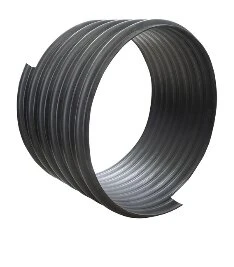Dec . 05, 2024 20:37 Back to list
High-Density Polyethylene Duct Pipe Applications and Benefits for Underground Infrastructure
Understanding HDPE Duct Pipe A Comprehensive Overview
High-Density Polyethylene (HDPE) duct pipes have emerged as a cornerstone material in various industries due to their unique properties and advantages. Known for their durability, flexibility, and resistance to chemicals, HDPE duct pipes are widely utilized in telecommunications, water distribution, and electrical applications. This article aims to provide a detailed understanding of HDPE duct pipes, highlighting their features, benefits, applications, and installation process.
What is HDPE?
High-Density Polyethylene is a thermoplastic polymer produced from petroleum. Importantly, it is known for its high strength-to-density ratio, making it suitable for multiple applications. HDPE is inherently resistant to impact, moisture, and chemicals, making it an ideal choice for underground installations where environmental factors can lead to pipe deterioration.
Features of HDPE Duct Pipe
1. Durability HDPE duct pipes are designed to withstand harsh environments. They are resistant to corrosion, rot, and UV radiation, ensuring a long service life. This durability makes them an excellent choice for both above-ground and underground applications.
2. Flexibility Unlike traditional materials, HDPE allows for easier installation due to its flexibility. This flexibility also minimizes the risk of cracks and breakage under stress or movement of the ground, which is particularly beneficial in seismic zones.
3. Chemical Resistance HDPE is resistant to many chemicals, which makes it suitable for transporting various fluids and gases without risk of contamination or degradation.
4. Lightweight Compared to materials like steel and concrete, HDPE duct pipes are lightweight, which simplifies transportation and handling during installation.
5. Cost-Effective While the initial material cost of HDPE may be comparable to other materials, the reduced installation costs, lower maintenance requirements, and long lifespan contribute to significant savings over time.
Applications of HDPE Duct Pipe
HDPE duct pipes are utilized in a variety of applications, including
hdpe duct pipe

1. Telecommunications HDPE duct pipes are widely used to house fiber optic cables and other telecommunication infrastructure. Their smooth interior surfaces minimize friction, facilitating easy installation of cables.
2. Water Distribution Many municipalities rely on HDPE pipes for their water distribution systems due to their reliability and longevity. They are suitable for transporting potable water as well as reclaimed water.
3. Industrial and Chemical Industries utilize HDPE pipes for transporting corrosive substances and chemicals, owing to their chemical resistance. Also, they are used for drainage systems, mining applications, and more.
4. Electrical Conduits HDPE duct pipes serve as conduits for electrical cables, providing protection from moisture and physical damage.
Installation Process
The installation of HDPE duct pipes involves several key steps
1. Planning A thorough assessment of the site is essential to plan the layout, depth, and any necessary fittings or connections.
2. Trenching A trench is excavated to the appropriate depth, ensuring that the soil is stable and able to support the pipe.
3. Pipe Joining HDPE pipes can be joined using various methods, including thermal butt fusion, electrofusion, and mechanical fittings. The choice of joining method depends on the specific requirements of the project.
4. Backfilling After installation, the trench is backfilled carefully to protect the pipes and ensure proper support.
5. Testing It is crucial to test the system for leaks and ensure it meets the required pressure and performance standards.
In conclusion, HDPE duct pipes represent a reliable and versatile solution for a wide range of applications. Their durability, flexibility, and resistance to various environmental factors make them a preferred choice in industries ranging from telecommunications to water distribution. As engineers continue to seek cost-effective materials for infrastructure projects, the adoption of HDPE duct pipe is likely to grow, ensuring efficient and sustainable utility solutions for the future.
-
Premium PVC-M Water Supply Pipe - Durable & Efficient
NewsAug.02,2025
-
Premium PP Welding Rod: GPT-4 Turbo Enhanced
NewsAug.01,2025
-
HDPE Drainage & Irrigation Pipe - Durable, Efficient Solutions
NewsAug.01,2025
-
Premium PVC Transparent Pipe: Durable & Clear Solutions
NewsJul.31,2025
-
High-Quality UPVC Electrical Pipe for Safe Wiring Solutions
NewsJul.30,2025
-
Premium PVC Pipe Fitting Supplier – Durable & Leak-Proof Solutions
NewsJul.30,2025

